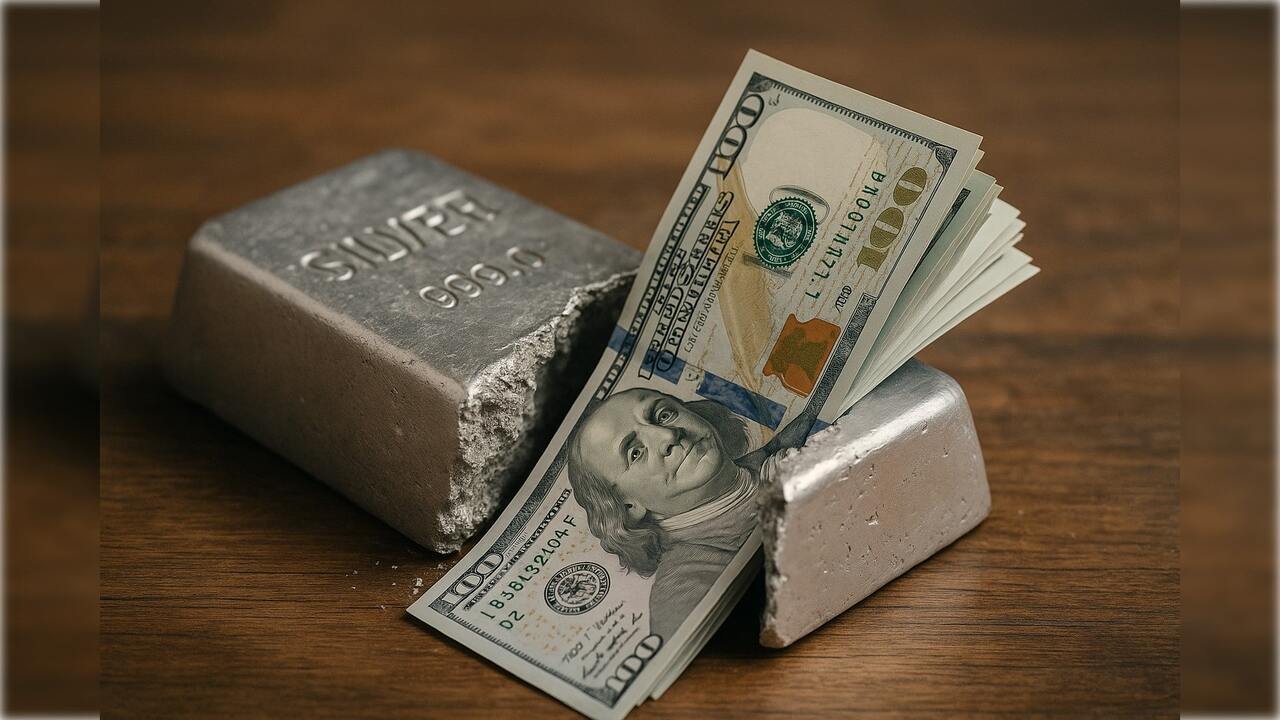(Money Metals News Service) On a recent episode of the Money Metals Podcast, host Mike Maharrey sat down with Keith Neumeyer, President and CEO of First Majestic Silver Corporation, for an in-depth discussion on silver markets, mining challenges, and the future of precious metals investing.
Founded 22 years ago, First Majestic has expanded from producing just 25,000 ounces of silver in 2004 to roughly 22 million ounces of silver equivalent in 2024. Approximately 60% of the company’s production last year was silver and 40% gold.
Following the January 2025 acquisition of the Los Gatos silver mine in Chihuahua, Mexico, First Majestic expects to boost output to 31–32 million ounces of silver equivalent this year. With a market capitalization between $3 billion and $3.5 billion and 5,500 employees worldwide, First Majestic is one of the most recognized names in the silver space.
Neumeyer noted that today, First Majestic’s cash flows are the strongest in the company’s history, and its treasury is in a better position than ever before. Despite silver’s solid performance over the past year, rising about 12%, many still perceive it as lagging behind gold, largely because silver has not set new nominal highs the way gold has.
(Interview Starts Around 7:19 Mark)
Silver’s Industrial Strength
When asked about silver’s role, Neumeyer distinguished between gold and silver. Gold, he emphasized, is the granddaddy of all currencies.
Silver, by contrast, is predominantly an industrial metal, with 70% of global output consumed across industries such as electronics, solar energy, and electric vehicles. He pointed out that over 10,000 applications depend on silver.
Today, solar panels and electric vehicles alone account for over 30% of global silver consumption—two sectors that barely existed two decades ago.
Above-ground silver stockpiles are at historic lows, while industrial demand has reached unprecedented highs. Neumeyer insisted that the supply-demand fundamentals are stronger now than when he founded First Majestic, reinforcing his long-held view that triple-digit silver prices are not only possible but increasingly necessary.
Skepticism of Official Silver Data
Neumeyer took sharp aim at the Silver Institute and Metals Focus, two groups often cited as authorities on silver market statistics. First Majestic withdrew from the Silver Institute several years ago, with Neumeyer claiming that these organizations fabricate numbers based largely on incomplete public data. In meetings with refiners and electronics manufacturers worldwide, including recent discussions in Japan, Neumeyer found no evidence that Metals Focus had ever contacted these key industry players.
He argued that both global silver supply and consumption are significantly underestimated. Given the structural secrecy of silver use in manufacturing and the private nature of most refiners and smelters, Neumeyer believes the real annual supply deficits are far larger than officially reported.
An 18-Year Problem and the Need for Higher Prices
With four consecutive years of reported silver market deficits and hundreds of millions of ounces short, Neumeyer warned that silver supply cannot be replaced quickly.
On average, it takes 18 years from the discovery of a new deposit to full-scale production. Rising permitting hurdles, political instability, and financing challenges further complicate new mine development.
Neumeyer stressed that triple-digit silver prices are necessary to motivate new investment in the sector. Without significantly higher prices, mining companies and banks alike will continue to shy away from the risks associated with bringing new silver mines online.
The Suppression Problem in Paper Silver Markets
Turning to market dynamics, Neumeyer highlighted the extraordinary leverage in the paper silver market. He estimates that roughly 1 billion ounces of paper silver trade daily, adding up to 240 billion ounces annually across 240 trading days. With global mine production at just 830 million ounces per year, that implies a paper-to-physical leverage ratio close to 300 to 1.
This massive paper market suppresses physical prices and benefits banks, who often fix long-term silver delivery contracts for industrial buyers like Tesla and BMW. Neumeyer proposed a solution: require paper markets to hold at least 10% of physical metal against outstanding contracts, similar to banking reserve requirements. Such a reform, he argued, would restore at least a measure of transparency and stability.
First Majestic’s Unique Strategy
Unlike most mining companies, First Majestic holds significant amounts of silver and gold on its balance sheet. In 2024, about 5% of its silver production was processed through its own mint in Nevada. That share is expected to grow to 10% in 2025. By retaining physical inventory, First Majestic protects itself from dollar devaluation and market volatility.
Neumeyer emphasized that buying physical metal is about wealth preservation. For him, physical gold and silver are savings vehicles, not trading assets. In contrast, mining stocks offer leverage but come with greater risks and require more precise timing.
The Coming Bull Market in Mining Stocks
Neumeyer believes the mining sector is entering a new multi-year bull market. Drawing a parallel to the early 2000s, when the NASDAQ collapsed by 85% and capital rotated into real assets, he forecasted strong performance for mining stocks from 2025 through 2030. Physical metals, he said, offer stability, but mining equities provide explosive upside potential in a rising market.
He advised investors to focus on companies with strong management teams, significant track records, and projects located in stable jurisdictions. He warned against investing in politically unstable countries where property rights and mining permits are insecure. In his view, North America and Australia offer the best environments for mining investment.
Final Thoughts
Neumeyer encouraged all investors to own physical metals as a foundation of wealth preservation, then add mining equities for additional leverage. Given record-high industrial demand, crumbling inventories, and a broken paper silver market, he believes the coming years could see silver prices rise dramatically.
For more information about First Majestic Silver Corporation, Neumeyer directed listeners to the company’s website at www.FirstMajestic.com and to follow updates on Twitter at @FirstMajestic and @KeithNeumeyer.

